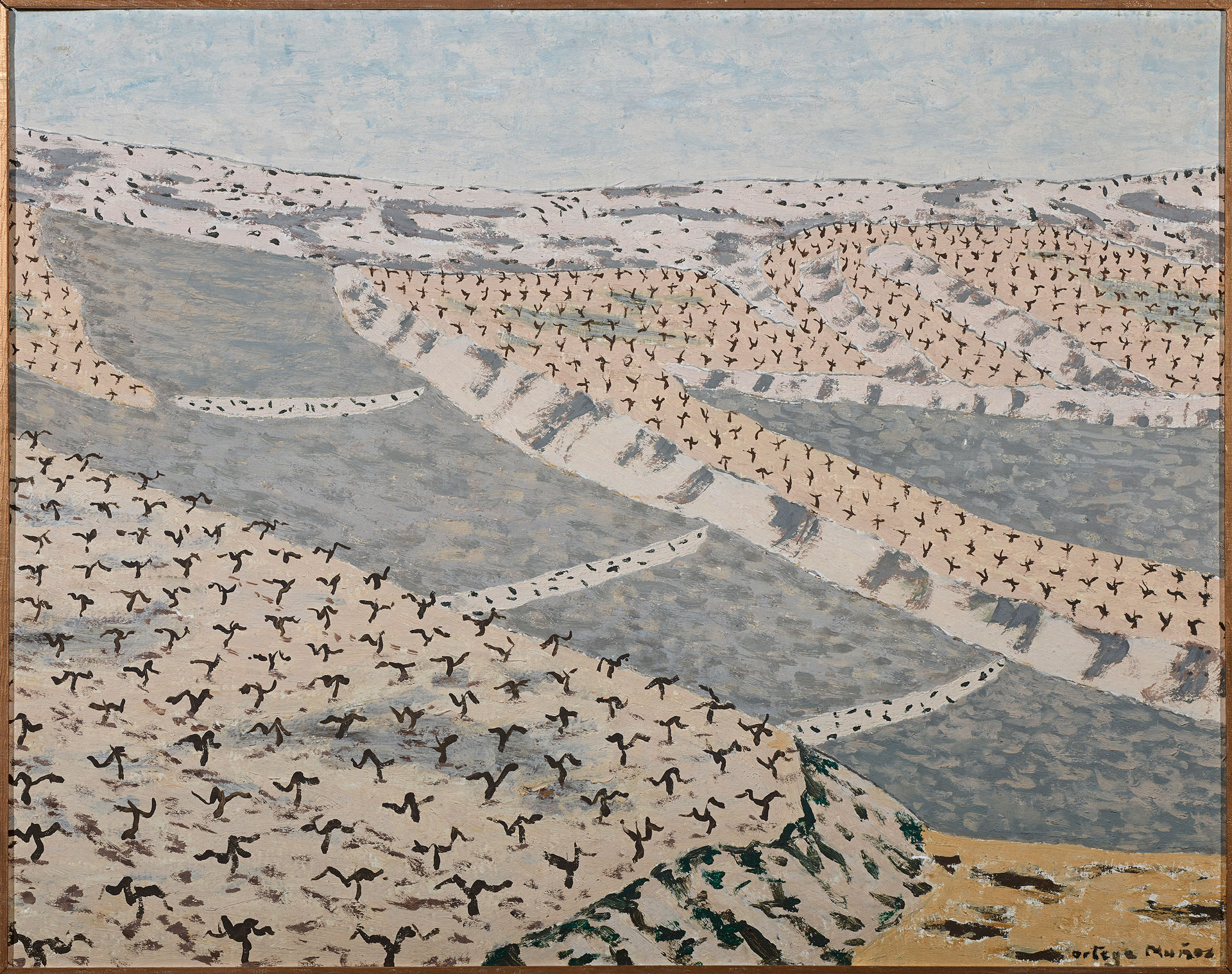
Godofredo Ortega Muñoz (San Vicente de Alcántara, Badajoz, 1905 – Madrid, 1982)
Vineyards
1967
WORK INFORMATION
Oil on canvas, 73 x 92 cm
OTHER INFORMATION
Signed in the lower right-hand corner: "Ortega Muñoz"
Godofredo Ortega Muñoz was one of the leading practitioners of landscape painting, a discipline whose importance had declined in other latitudes and yet experienced a strong revival in Spain after the end of the Civil War. Ortega Muñoz had a much more cosmopolitan life and artistic career than other landscape artists of his day; he did not take part in the homegrown avant-garde enterprises of the prewar years and was a latecomer to the landscape genre, although once he embraced it his dedication was very decided. A self-taught artist, he left his hometown of San Vicente de Alcántara to establish himself as a painter in Madrid, working as a copyist at the Museo de Reproducciones Artísticas. When he was barely 20 years old, Ortega Muñoz travelled to Paris and later set off on a 15-year odyssey that took him to Europe, Asia Minor and Egypt, including a five-year sojourn in Italy. After the Spanish Civil War he returned to the town of his birth, and in 1952 he moved to Madrid where he soon earned his first distinctions, such as the Grand Prize at the Hispano-American Art Biennial in Havana (1954).
Figures were present in his oeuvre until the mid-1950s, although only a few examples of his work as a portraitist—the principal object of his artistic endeavours for years—have survived and are now scattered across the globe. In his Cabeza de mujer [Head of a Woman] we can detect the influence of the Italian Trecento paintings of Giotto and Taddeo Gaddi, but also that of the metaphysical school of Giorgio de Chirico and Mario Sironi. Here we are witnessing a process of reduction or simplification of individual features; his figures are round and solid and seem to be lost in thought.
After the mid-1950s his work focused on interpreting the landscape of Extremadura and Castile in very muted colours, frequently repeating the same theme over and over again. His landscapes were invented rather than copied; he observed nature and then returned to the studio to create his own version and give it artistic meaning. These harsh, dour landscapes only hint at the presence of human beings and are rendered using a sober, limited palette, denoting an almost ascetic determination to purge and purify. Viñas [Vineyards] is a good example of this. The work was painted at a time when Ortega Muñoz was already a highly respected artist whose reputation earned him a place in the Gallery of Honour at the 1968 National Fine Arts Exhibition. Here the cloudy sky almost seems to merge with the land, and the purification and refinement of aesthetic concepts is taken to such an extreme that this piece can be interpreted as a genuinely abstract painting by virtue of the interplay of spaces and blocks of colour. Eduardo Cirlot, one of the leading theorists of Spanish Art Informel, said that, in his view, Ortega Muñoz's art was "the solid proposal of one of the most sensitive Spanish artists of the day and one who, moreover, had made abstraction something unnecessary". [Genoveva Tusell García]

